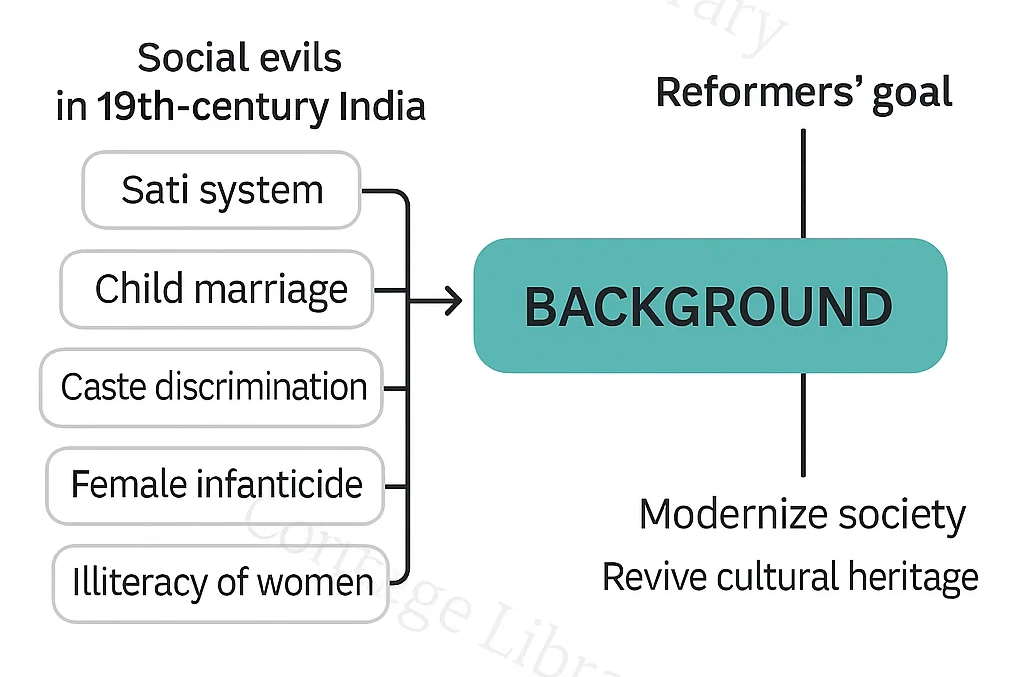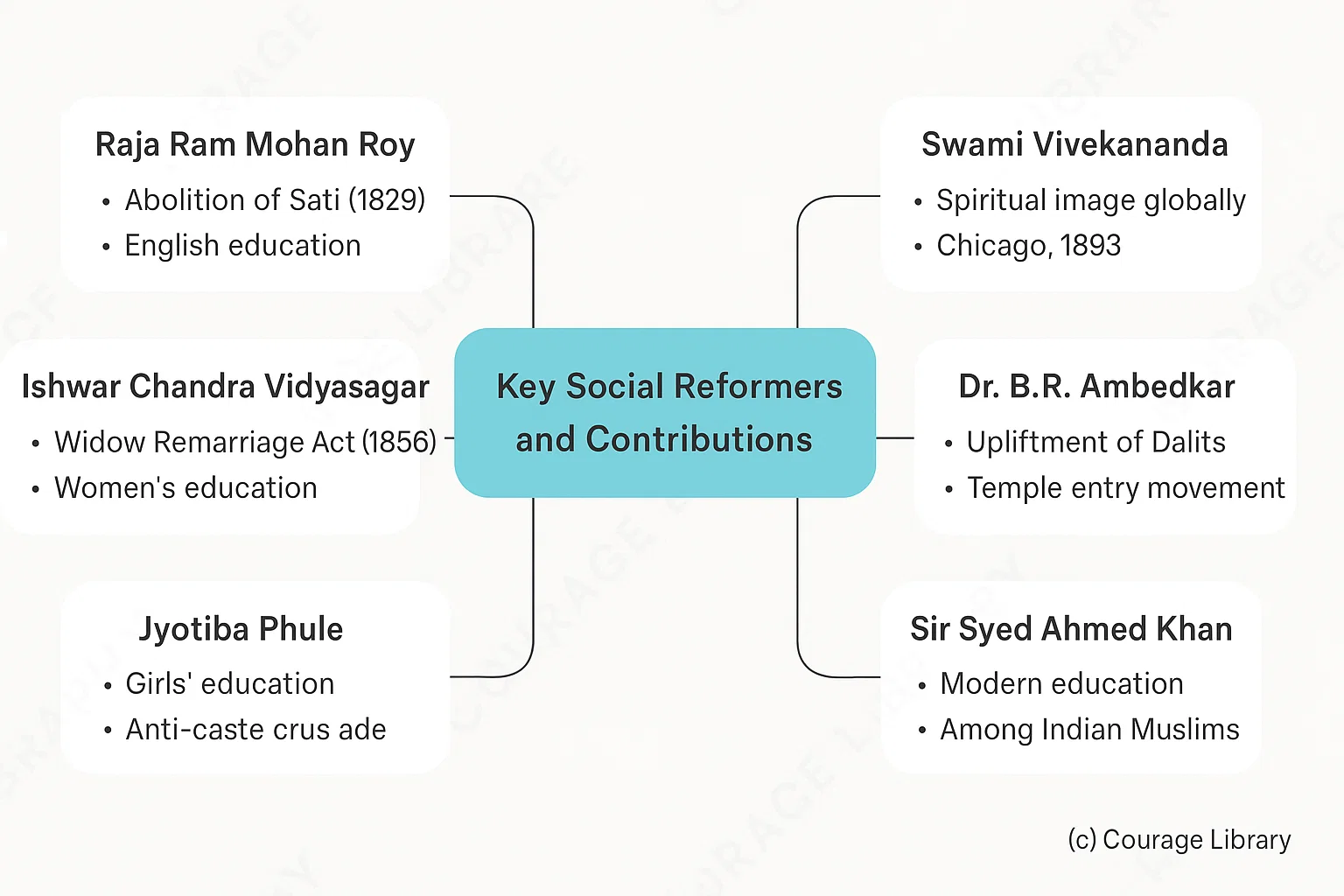SSC CGL - Detailed Guide 2025
Self-Paced Course

Social & Religious Reform Movements in
India
(19th - Early 20th Century)
Reference: Lucent GK, NCERT Class 6–12
1. Background
- 19th-century India was plagued by social evils like:
- Sati system
- Child marriage
- Caste discrimination
- Female infanticide
- Illiteracy of women
- Reformers aimed to modernize Indian society while reviving its rich cultural heritage.

2. Major Reform Movements and Founders
| Movement | Founder / Leader | Key Features / Reforms |
|---|---|---|
| Brahmo Samaj | Raja Ram Mohan Roy (1828) | Opposed Sati, caste system, idol worship. Promoted monotheism, women's rights. |
| Arya Samaj | Swami Dayananda Saraswati (1875) | Back to Vedas, rejected idol worship, promoted widow remarriage and education. |
| Prarthana Samaj | Atmaram Pandurang & MG Ranade | Social reforms in Maharashtra, supported widow remarriage, female education. |
| Ramakrishna Mission | Swami Vivekananda (1897) | Focused on spiritual upliftment and social service. Based on teachings of Ramakrishna Paramhansa. |
| Theosophical Society | Annie Besant, founded in USA | Promoted Indian philosophy, education (e.g., Central Hindu College in Benares). |
| Aligarh Movement | Sir Syed Ahmed Khan (1886) | Educational upliftment of Muslims, founded Aligarh Muslim University. |
| Satya Shodhak Samaj | Jyotiba Phule | Worked for lower castes and women's rights. Opposed Brahminical dominance. |
| Young Bengal Movement | Henry Louis Vivian Derozio | Promoted rationalism, questioned orthodoxy, active in Kolkata. |
| Sri Narayana Dharma Paripalana (SNDP) | Sri Narayana Guru | Reforms among backward Ezhava community in Kerala. |
Theosophical Society was founded by Helena Blavatsky and Henry Steel Olcott at New York in 1875, but Annie Besant significantly shaped its presence and influence in India.

3. Key Social Reformers and Contributions
- Raja Ram Mohan Roy: Abolition of Sati (1829), promoted English education
- Ishwar Chandra Vidyasagar: Widow Remarriage Act (1856), women's education
- Jyotiba Phule: Girls' education, anti-caste crusade
- Swami Vivekananda: Raised India's spiritual image globally (Chicago, 1893)
- Dr. B.R. Ambedkar: Upliftment of Dalits, temple entry movement
- Sir Syed Ahmed Khan: Modern education among Indian Muslims
4. Important Acts Linked with Reforms
| Act | Year | Purpose |
|---|---|---|
| Abolition of Sati | 1829 | By Lord William Bentinck, pushed by Raja Ram Mohan Roy |
| Widow Remarriage Act | 1856 | Supported by Ishwar Chandra Vidyasagar |
| Age of Consent Act | 1891 | Raised age of marriage to 12 for girls |
| Temple Entry Proclamation | 1936 | Travancore king allowed low castes into temples |
| Caste Disabilities Removal Act | 1850 | Allowed conversion without losing rights. |
5. Timeline of Major Reform Movements
- 1828 – Brahmo Samaj (Raja Ram Mohan Roy).
- 1848 – Satyashodhak Samaj (Jyotirao Phule).
- 1867 – Prarthana Samaj (Atmaram Pandurang).
- 1875 – Arya Samaj (Dayanand Saraswati).
- 1875 – Theosophical Society founded (in India from 1879).
- 1885 – Aligarh Muslim University movement (Sir Syed Ahmed Khan).
- 1897 – Ramakrishna Mission (Swami Vivekananda).
Developed By Satyam Kumar
Next
Start Your SSC CGL Journey Now!
Join Courage Library to experience disciplined study and expert support.
Be a Couragian!